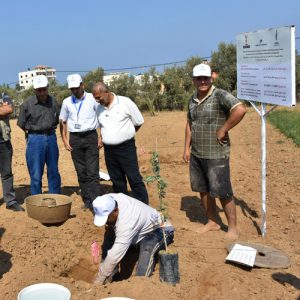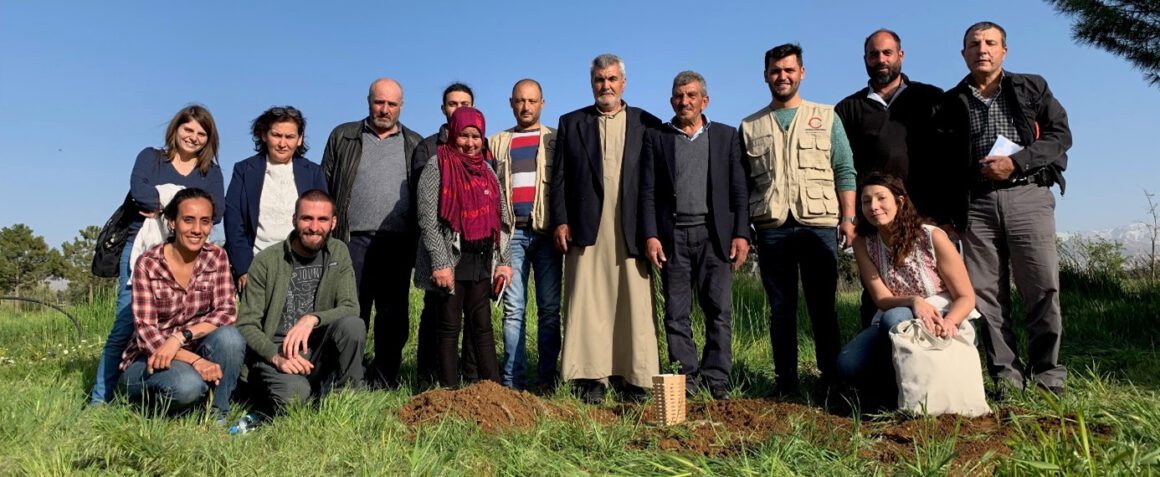Menaqua Publishes Final Results of Tree Planting Assessment
Three years and almost 5,000 seedlings after Menaqua began planting trees in Jordan and Lebanon in 2019, we are proud to present the results of a comprehensive assessment of the Cocoon planting technology we use in our projects.
“As we scale up our regreening activities, I believe the value of testing this technology in ’real-life’ scenarios will become increasingly clear,”
says Jan Nonner, senior hydrogeologist at Menaqua and one of the researchers who worked on the assessment. “In fact, our close cooperation in Jordan with the Ministry of Agriculture has already resulted in a follow-up project to restore Al Hisha Forest, which was launched spring 2021.”
Tree planting assessment
The assessment was carried out in collaboration with Menaqua’s partners: Land Life Company, Jordan’s Ministry of Agriculture and the Nature Conservation Center of the American University of Beirut (AUB). It involved planting indigenous forest and fruit tree seedlings at seven sites in Jordan (Al Faisal Station near Jerash and Maysara near As Salt) and Lebanon (Arsal community in Bekaa Valley, Ras Baalbak and AREC Research Centre). Trees were planted with the Cocoon and without the Cocoon, so that a comparison could be made between Cocoon technology and traditional planting methods. Water volumes, plant survival rates and growth were then monitored over a period of 12-18 months.
Key takeaways
The assessment generated the following insights:
- Plant performance for both the ‘with Cocoon’ and ‘without Cocoon’ scenarios was favourable at Al Faisal station in Jordan and Arsal farm in Lebanon. The rainfall, soil conditions and overall maintenance contributed to a survival rate of over 60-70%.
- At the sites Maysara in Jordan and Ras Baalbak in Lebanon both the ‘with Cocoon’ and ‘without Cocoon’ scenarios showed poor survival rates. The difficulty in terrain, low rainfall and poor soil charateristics contributed to unfavourable planting conditions.
- For the more favourable sites, the ‘with Cocoon’ scenario showed better growth characteristics in 50% of the cases, compared to the ‘without Cocoon’ scenario for the same species.
- The overall better growth for the ‘with Cocoon’ scenario can be attributed to the more continuous and fine-tuned supply of water to the plant from the Cocoon reservoir. This compares to the discontinuous irrigation applied in the ‘without Cocoon’ scenario.
- Cocoon technology should be considered in future large-scale planting projects in semi-arid areas. Although the technology comes at a cost, its potential advantages are clear: better plant growth characteristics, reduced water use after the initial planting and less labour needed for irrigation.
- The use of cocoon technology for tree planting should be considered only if the criteria for minimum rainfall (>250mm) and acceptable soil conditions are met. The presence of partially well developed soils and sufficient rainfall is needed to support long-term plant growth.
- Communities were involved at all sites to varying degrees. Community involvement was strongest in Al Faisal and Bekaa Valley in Lebanon where the AUB implemented ‘citizen science’, an approach that facilitates local participation in scientific research. Generally, we found that community involvement was best at sites where farmers own the land themselves and have a greater interest in trying out new technology.
 When we started planting trees in Palestine in 2017 and in Jordan and Lebanon in 2018, the Cocoon was well established by LLC in Europe, sub-Saharan Africa and the Americas. However, limited usage data was available for the Middle East and North Africa. We are using the results of the assessment to guide our upcoming land restoration activities in Morocco and Egypt as well as to support the evidence base for the Cocoon’s potential in the climatically challenging MENA region.
When we started planting trees in Palestine in 2017 and in Jordan and Lebanon in 2018, the Cocoon was well established by LLC in Europe, sub-Saharan Africa and the Americas. However, limited usage data was available for the Middle East and North Africa. We are using the results of the assessment to guide our upcoming land restoration activities in Morocco and Egypt as well as to support the evidence base for the Cocoon’s potential in the climatically challenging MENA region.
The full report is available here.
